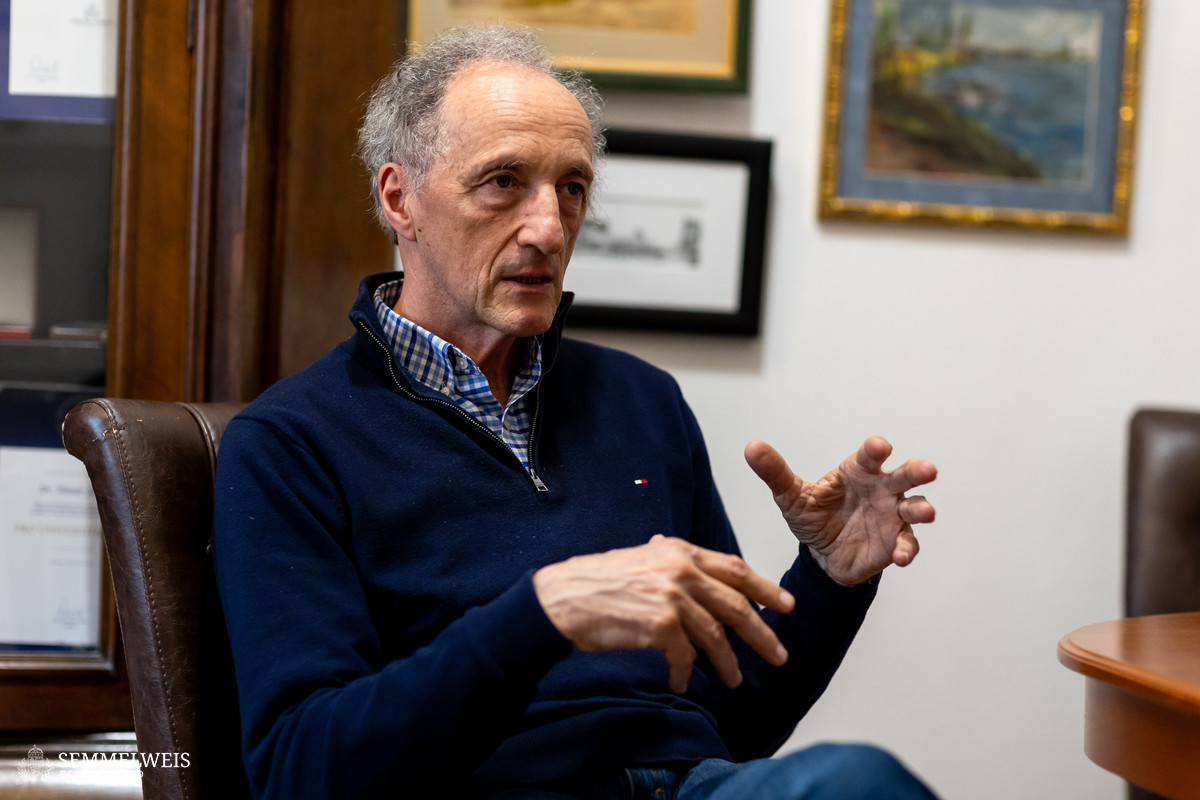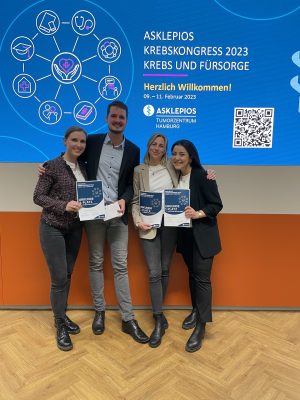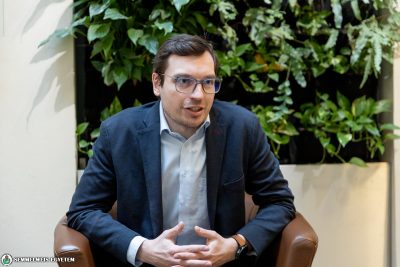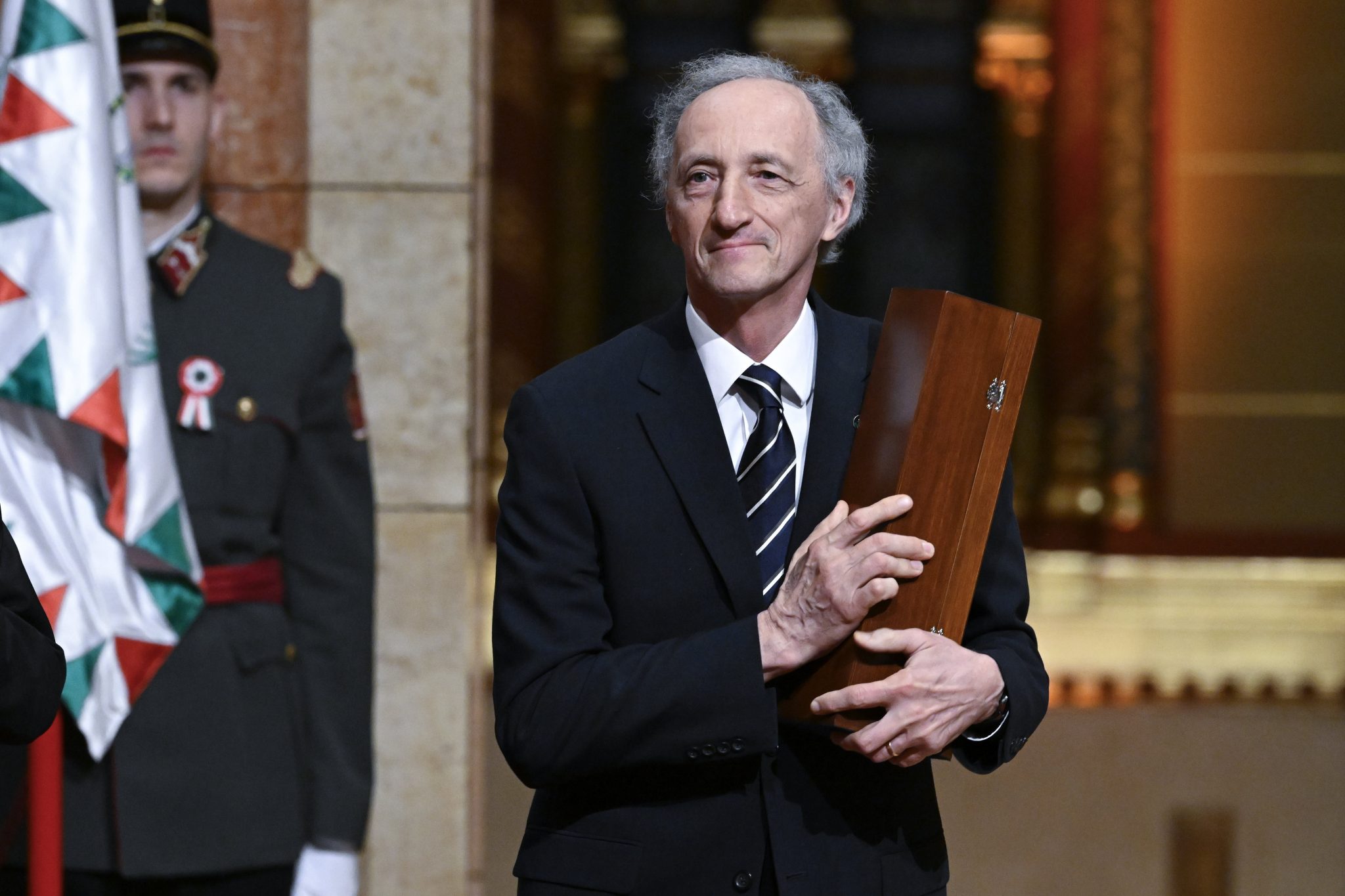
Dr. József Tímár – Professor Emeritus of the Department of Pathology, Forensic and Insurance Medicine; researcher of the Tumor Progression Working Group; former Director of the former 2nd Department of Pathology, former Vice Rector of the university, former President of the Doctoral Council – was honored for his outstanding scientific career, especially for his research on the molecular basis of tumor metastasis and the development of new therapies based on it.
In 2017, when he stepped down after ten years as head of the 2nd Department of Pathology, he told our website he wanted to channel his energy freed up into research to make a huge splash – the time for which came this year with a major publication. He was working with a consortium to find out how a tumor in which the oncogene has mutated differs from others.
I found the question intriguing because in the age of targeted therapies, there are efforts to develop drugs against almost all oncogenes which behave abnormally, but international practice holds that this is not possible against mutations, since they are undruggable. However, we tried to find alternative ways of producing a new compound suitable for this purpose.
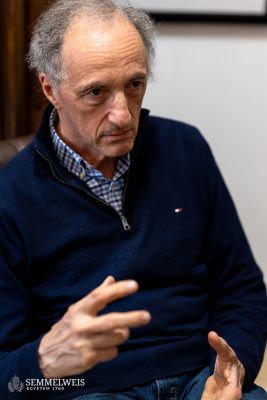 Since then, the theory of such oncogenes being undruggable has been disproved, but the drug only worked against lung cancer. It was tested whether the biological effect of the drug could be confirmed and whether it could be made to work for other types of cancer. “We tried to harness the post-translational modifications of the oncogene: one form of this is prenylation, i.e. the attachment of lipids to proteins, which is an established method. Studies have been conducted on this and there are existing drugs for other diseases, such as premature ageing syndrome. To our surprise, a drug of the same type has been introduced for a rare oncogenic mutation that is mainly present in oral cancers and bladder cancer. We tested the effect of combining the new oncogene inhibitors with this lipid-modifying drug – both are in clinical use, just for different purposes. We found that the drugs amplify each other’s effects,” he pointed out. They found that the technique is effective for all mutations in the oncogene. Research is now being continued to see if it can be used for poorly treatable tumors such as pancreatic cancer. “We are trying to utilize our patent and prove its efficacy in clinical trials. Semmelweis University is an ideal place to achieve this, as many patients with different types of cancer are being treated here,” he said.
Since then, the theory of such oncogenes being undruggable has been disproved, but the drug only worked against lung cancer. It was tested whether the biological effect of the drug could be confirmed and whether it could be made to work for other types of cancer. “We tried to harness the post-translational modifications of the oncogene: one form of this is prenylation, i.e. the attachment of lipids to proteins, which is an established method. Studies have been conducted on this and there are existing drugs for other diseases, such as premature ageing syndrome. To our surprise, a drug of the same type has been introduced for a rare oncogenic mutation that is mainly present in oral cancers and bladder cancer. We tested the effect of combining the new oncogene inhibitors with this lipid-modifying drug – both are in clinical use, just for different purposes. We found that the drugs amplify each other’s effects,” he pointed out. They found that the technique is effective for all mutations in the oncogene. Research is now being continued to see if it can be used for poorly treatable tumors such as pancreatic cancer. “We are trying to utilize our patent and prove its efficacy in clinical trials. Semmelweis University is an ideal place to achieve this, as many patients with different types of cancer are being treated here,” he said.
Dr. József Tímár’s research interests include tumor metastasis and its cell biological and genomic basis. He is a pioneer of predictive and prognostic molecular pathology diagnostics in Hungary, and has played a pivotal role in oncology research, in the design and management of the oncology program.
As he explained, for a long time the pathologist’s job had been to determine whether the tissue removed by the surgeon was benign or malignant. The next stage was to realize that malignant tumors behave differently in different patients – the description of this is called prognostics, but it is still based on simple pathological parameters. Then came the molecular era when the genetic defects of tumors began to be understood. In the second half of the 1990s, the era of new therapies dawned with the appearance of therapies based on these genetic characteristics.
This is a very interesting stage in the development of pathology, which continues to this day, even if textbooks no longer need to be rewritten year after year. About 200 types of malignant tumors were described histologically 200 years ago – this is still valid today, but we now know that a tumor can be further subdivided into 10-20-30 genetic types.
Starting from the mid-2000s, Dr. József Tímár and his colleagues performed molecular diagnostics at the National Institute of Pulmonology and then at Semmelweis University. “Already at that time, we attached importance to whether the defect of the most frequently mutated human oncogene is present in the tumor. The result of our work was a so-called KRAS mutation patient population of unprecedented size, focusing on lung cancer, which has been used to perform a large number of clinical trials investigating the drug sensitivity and behavior of tumors. We have tried to apply the results to other types of tumors, such as colorectal cancer and pancreatic cancer, but we have also studied the genetics of melanoma,” he stressed. Their results suggested that the activity of the patient’s immune system influenced the genetic make-up of the melanoma, and that the patient’s previous treatment also influenced metastasis, a phenomenon known to occur in other cancers but not in melanoma.
As he pointed out, pathology is the basis of effective medical care and the ultimate diagnostic tool. This also poses a great challenge because if the pathologist makes a mistake, everyone will make a mistake, as they will base their treatment of the patient on the wrong diagnosis. “It’s an exciting task with a lot of responsibility, acting as a constant stimulus, as you have to keep improving. It is not something that can be mastered once, it requires a lifetime of learning,” he emphasized.
In order to be a good researcher, Dr. József Tímár believes, one should not fully accept the statements in textbooks and not consider them immutable. Dogma must be challenged, generating exciting research, such as his research team’s study on changing oncogenic therapies.
He also attaches equal importance to the clinical training of pathologists. “Today, the diagnostics of pathology are so close to everyday therapy that only those who understand the language of clinicians and know the therapeutic options can become really good pathologists,” he stressed.
He is particularly proud of his research team, which has trained colleagues who have continued his research, even in other institutions. For example, the National Korányi Institute of Pulmonology has a unique lung cancer research group that has gained international acclaim; furthermore, many of his former colleagues at the National Institute of Oncology are also conducting research on the immunology of metastases. “Hungary has one of the highest incidences of lung cancer, which is why I thought it was important to be among the leaders in research in this field,” he explained. Dr. József Tímár also considers awareness-raising crucial, having recently given a number of interviews which have attracted huge audiences and a huge listenership, thus exceeding his expectations.
 Besides science, his main interests are sport, visual arts, and literature. He also enjoys tennis, swimming, and winter sports – he believes it is important to exercise when having a sedentary job. He not only likes reading but has also published a book of his own poetry. “I’m attracted to writing poetry because it’s the most succinct way of expression. This is also important in science, in writing scientific articles: you have to be able to convey meticulous information with precise wording.” He also draws a parallel between scientific research and his other hobby, fine arts. In the 1980s, while working at the Chester Beatty Research Institute in London, he fell in love with collecting antiquities thanks to a Hungarian colleague. “Strolling around the antique markets and looking for treasures is like doing research: both are very exciting and both give you the hope of finding something of great value,” he concluded.
Besides science, his main interests are sport, visual arts, and literature. He also enjoys tennis, swimming, and winter sports – he believes it is important to exercise when having a sedentary job. He not only likes reading but has also published a book of his own poetry. “I’m attracted to writing poetry because it’s the most succinct way of expression. This is also important in science, in writing scientific articles: you have to be able to convey meticulous information with precise wording.” He also draws a parallel between scientific research and his other hobby, fine arts. In the 1980s, while working at the Chester Beatty Research Institute in London, he fell in love with collecting antiquities thanks to a Hungarian colleague. “Strolling around the antique markets and looking for treasures is like doing research: both are very exciting and both give you the hope of finding something of great value,” he concluded.
Ádám Szabó
Translation: Judit Szabados-Dőtsch
Photos by Attila Kovács – Semmelweis University; Szilárd Koszticsák – MTI
